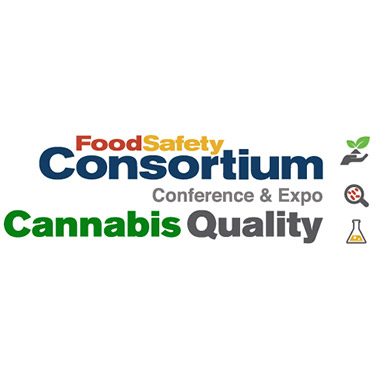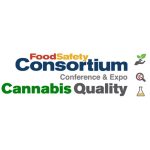In the intricate web of the global food supply chain, ensuring the safety and authenticity of consumables stands as a paramount concern. Food traceability, defined as the ability to provide comprehensive information about the history and origin of a product throughout its journey, emerges as a cornerstone in this endeavour. This meticulous documentation not only facilitates supply chain management but also empowers swift actions such as recalls in the event of safety or quality breaches.
Beyond its logistical benefits, food traceability assumes a pivotal role in safeguarding consumer interests. By serving as a fundamental component of food safety and quality assurance, traceability ensures transparency and accountability at every stage of production and distribution. However, the efficacy of a traceability system is inherently tied to the credibility of its origins, paving the way for the convergence of food traceability and authentication.
Unveiling the Shadows: The Challenge of Food Adulteration
In an era plagued by instances of food adulteration and mislabelling, the imperative for robust authentication mechanisms becomes increasingly apparent. Reports from international and national research bodies shed light on a myriad of cases spanning various food categories, from wine and spirits to olive oil, fish, meat, and beyond. This pervasive challenge underscores the need for stringent standards and regulatory frameworks to combat fraudulence and uphold consumer trust.
Food fraud manifests in several forms, each presenting unique challenges for detection and prevention. For example:
- Concealment involves hiding inferior or harmful ingredients within a product to avoid detection. An example of this is the addition of melamine in milk to falsely increase protein content readings, which led to a major scandal in China.
- Counterfeit products replicate and sell a product under the guise of a well-known brand, often with substandard quality. These fake products can range from everyday items like bottled water to high-end goods like wines and spirits. Counterfeiting not only deceives consumers but also damages brand reputations and violates intellectual property rights.
- Botanical Authentication ensures that plant-based products are derived from the claimed species and not substituted with cheaper alternatives. This is particularly important for products like herbal supplements, teas, and spices. For instance, saffron, one of the most expensive spices in the world, is often adulterated with less expensive substances such as dyed corn stigmas or safflower.
- Geographical Origin fraud involves misrepresenting the region from which a product originates. Certain regions are known for producing specific high-quality foods and beverages, such as Champagne from France or Parmigiano Reggiano cheese from Italy. Mislabelling products to benefit from these reputations deceives consumers and undermines genuine producers.
- Substitution entails replacing a high-value ingredient with a lower-cost one. This is common in products like olive oil, honey, and seafood. For example, extra virgin olive oil might be diluted with cheaper oils, or expensive fish species like tuna might be replaced with less costly ones like escolar. This not only cheats consumers but can also pose health risks.
- Mislabelling involves incorrectly listing ingredients or nutritional information on labels. An example is claiming a product is organic when it is not.
- Dilution involves adding water or other substances to increase the volume of a product. For instance, diluting fruit juices with water and not declaring it.
- Unapproved Enhancements involve using unauthorized substances to enhance the appearance or quality of a product. An example is adding unauthorized dyes to make a product look fresher or more appealing.
- Theft and Resale refers to stealing products and reintroducing them into the market through unauthorized channels. For example, reselling stolen goods without proper storage conditions.
- Artificial Additives involves using artificial ingredients to mimic the qualities of a natural product. For example, adding synthetic vanilla flavor instead of natural vanilla extraction
The New Traceability Rule of FDA
The Food and Drug Administration (FDA) has introduced a new traceability rule aimed at enhancing the ability to trace the origin of foods throughout the supply chain more efficiently. This rule mandates that companies maintain more rigorous records of their supply chains, focusing on high-risk foods. The implementation of this rule is expected to significantly improve the speed and accuracy of traceability in the event of a foodborne illness outbreak or contamination incident, thus ensuring faster recalls and reducing the risk to public health.
The Dawn of a New Era: Advancements in Food Fraud
As the spectre of food fraud looms large, there arises an urgent demand for sophisticated analytical techniques to authenticate foodstuffs with precision and reliability. Here, the advent of Artificial Intelligence (AI) heralds a new era of innovation. AI-driven algorithms can sift through vast datasets, identifying patterns and anomalies that elude traditional methods. Machine learning models can analyse complex chemical compositions, flagging deviations indicative of adulteration or mislabelling. By harnessing the power of AI, authorities can fortify their efforts in safeguarding consumer interests and preserving the integrity of the global food market.
Charting the Course Ahead: Toward a Safer, More Authentic Future
In the pursuit of food safety and quality, the symbiotic relationship between traceability and fraud, bolstered by AI technologies, emerges as a beacon of hope. By fortifying supply chain transparency and deploying cutting-edge analytical methods, stakeholders can navigate the complexities of the modern food landscape with confidence and integrity. The integration of the FDA’s new traceability rule further strengthens this endeavour, ensuring a safer and more reliable food supply chain for all.















